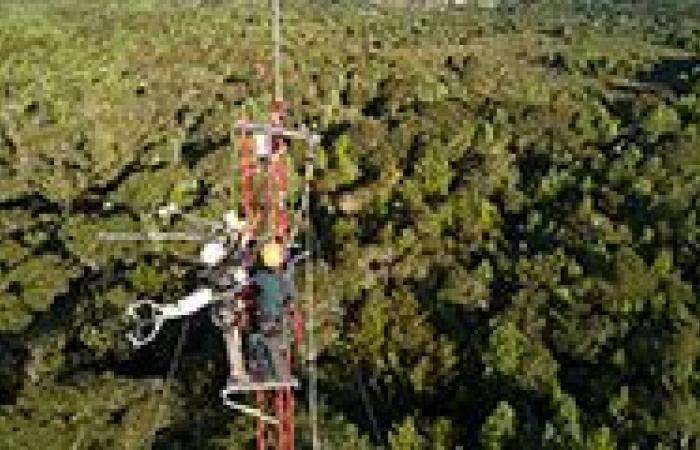
Work led by Jorge Pérez Quezada, principal researcher at the Institute of Ecology and Biodiversity (IEB) and academic at the Faculty of Sciences of the University of Chile, determined that said ecosystem absorbs about 18 tons of carbon dioxide per hectare per year. Projections suggest that mature forests in Chilean Patagonia have equal or greater carbon storage per hectare, and are only surpassed globally by a forest in Oregon, United States.
After ten years of studies that involved permanent monitoring of a mature forest in Chiloé, research led by Jorge Pérez-Quezada, scientist at the Institute of Ecology and Biodiversity (IEB) and academic at the University of Chile, demonstrated that this native ecosystem is a large sink of carbon dioxide (CO2) and a fundamental ally for the mitigation of climate change on a global scale. The work concluded that Chilote forests absorb about 18 tons of carbon dioxide per hectare per year, which places them in ranges close to tropical rainforests., which reach an average absorption of 22.5 tons of CO2 per hectare per year. So, Each hectare of Chiloé forest absorbs the equivalent of the emissions of 3.4 cars in one year.
This ecosystem, located inside the Senda Darwin Biological Station, has stored 1,073 tons of carbon per hectare throughout its existence, an amount that at the current absorption rate would take 211 years to fix. “It was previously believed that these ancient forests were no longer accumulating carbon, but this detailed and pioneering study in Chile joins others that show that they are doing so. These exact data are also being collected in the Alerce Costero National Park, in the Los Ríos Region, and in forest and peat bog ecosystems in Puerto Williams. Being able to measure with certainty the flow of carbon in Chile’s forests is a great step to promote their conservation and continue analyzing other similar ecosystems in the country.”says the academic from the Faculty of Agricultural Sciences of the University of Chile.
The results in Chiloé allow us to project that this enormous capacity to absorb CO2 extends to Chilean Patagonia in the same or greater quantity, as it is a less intervened area. Precisely, in the Puyuhuapi area, In the Aysén Region, the capacity of its forests to store carbon is being measured and it is estimated that it would be among the highest in the world, only surpassed by a temperate forest in Oregon, United States..
The research, carried out in a protected area near Ancud, was possible thanks to the installation of Eddy covariance monitoring towers, which generate more precise data than satellites, whose records are affected by the massive presence of clouds in the area. These towers measure the exchange of carbon dioxide between ecosystems and the atmosphere, thereby allowing us to know whether a forest is a source or sink of carbon, key information in the current climate and biodiversity crisis. This work is also part of the long-term studies promoted by the LTSER Chile Network (Long-Term Socioecological Studies Network).
Pérez, who is an agronomist and Doctor in Ecology, remembers that the Ministry of Environment made the commitment to estimate – through the so-called Nationally Determined Contributions (NDC) – how much our country contributes to the fight against climate change. For this reason, the portfolio has expressed the need to make more exact estimates, since the measurements that exist in Chile on how much carbon ecosystems are capturing are mainly based on data from the northern hemisphere or use indirect methodologies. Hence the importance of this study.
Carbon credits for conservation
In addition to laying the foundations for the conservation of our threatened native ecosystems and forming a solid foundation to support Chile’s commitment to be a carbon neutral country in 2050, the Research represents an important input for the generation of Carbon Credits of a standard much higher than that existing until now. Although their objective is to reduce emissions that cause global warming through certificates that can be traded on the market, the bonds have been questioned in recent times due to the imprecision of the data on which they are based.
“The ability we have to combine different cutting-edge technologies that we are using to measure biomass with centimetric precision and the carbon sequestration of our forests with sensors installed in situ, allows us to guarantee the most precise calculation that exists in this matter. That gives you a such a level of confidence and traceability to the certification of our bonds, that we believe it will revolutionize the Carbon Credits market“, Explain Felipe Escalonafounder and CEO of the company Carbon Real.
The company will begin selling this year High-quality carbon credits based on real measurements and traceable and incorruptible informationin order to promote nature conservation, as well as create sustainable economic benefits for landowners and local communities.





